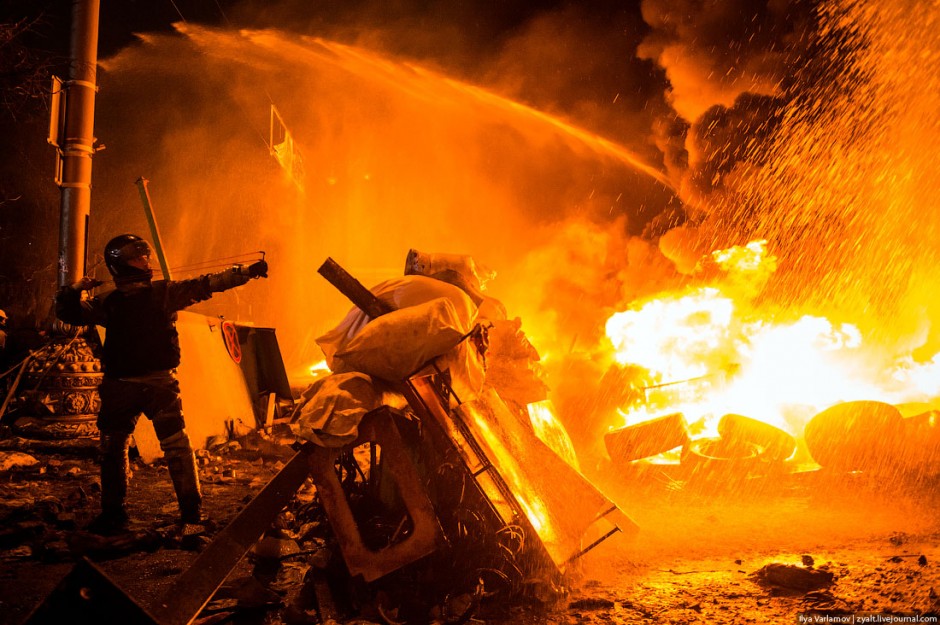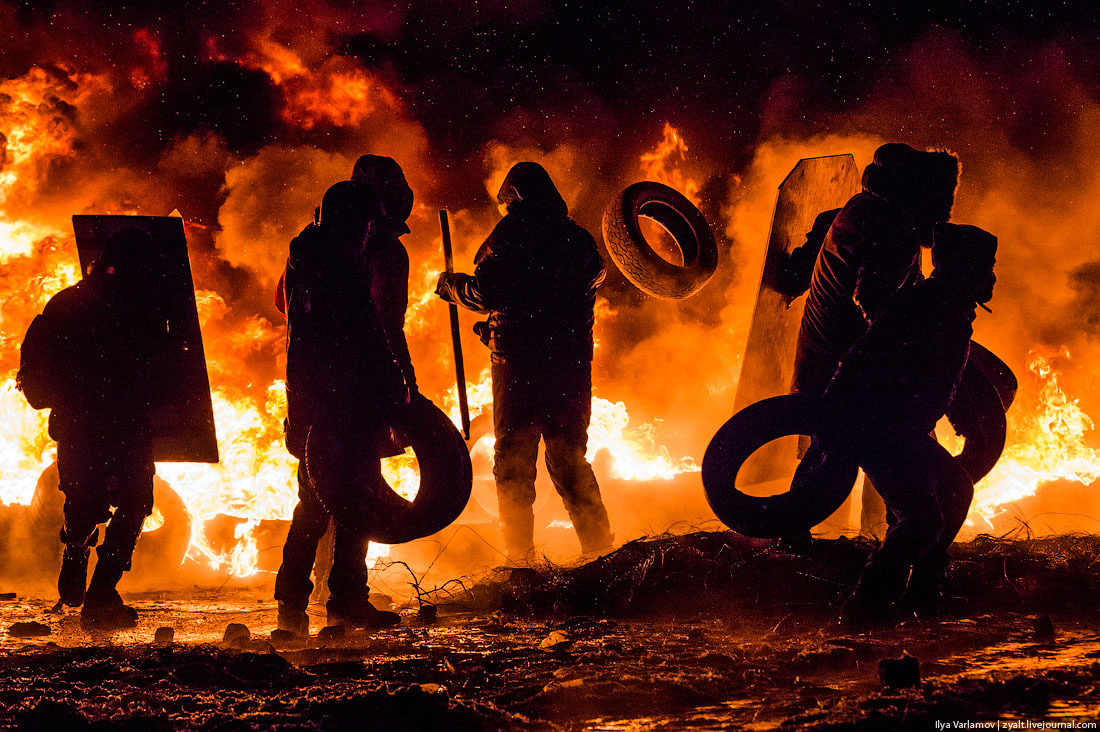Editor’s note: Ilya Varlamov is a photographer covering the protests and riots occurring in the Ukraine via his livejournal. His ground-level photojournalism captures the emotions of citizens reacting to Ukrainian President Viktor Yanukovych’s rejection of trade agreements with the European Union. This conflict has been ongoing since November, 2013; each day, Varlamov ventures out to various parts of the country to capture the unrest and conflict.
Below are photographs Varlamov posted on January 23 from the capital, Kiev. Reddit user xtender5 provided translations of the captions. All photos are property of Ilya Varlamov and have been reprinted here with permission.
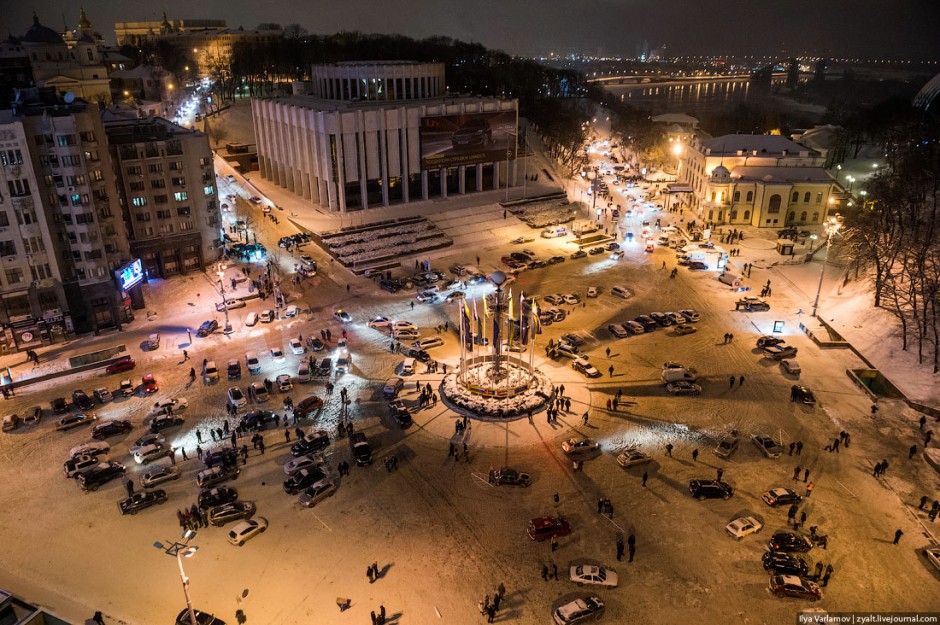
Europe Square. When it all started, there was a stage here, and politicians regaled the crowd with their brilliant ideas. Now the politicians have moved to the Maydan, and Europe Square has become a sort of rear area of the revolution. These vehicles deliver food, old tires, wood, medicines, and reinforcements.
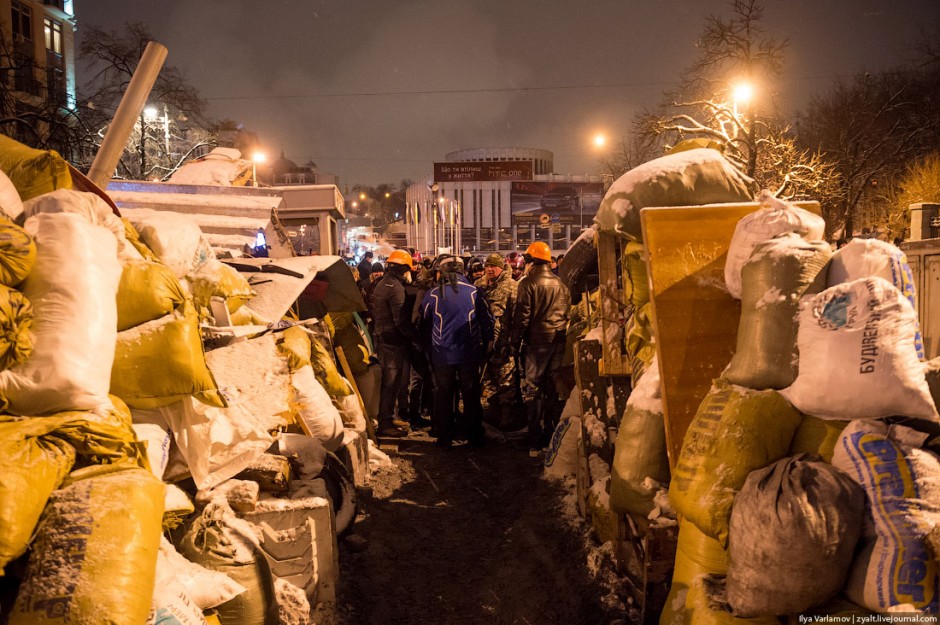
Michail Grushevsky Street. The first barricade was built here. Guards do not let bystanders pass. Only press, activists (those prepared to clash with Berkut), or volunteers are allowed in. Rubberneckers are kept out, to prevent them from interfering with the work at hand.
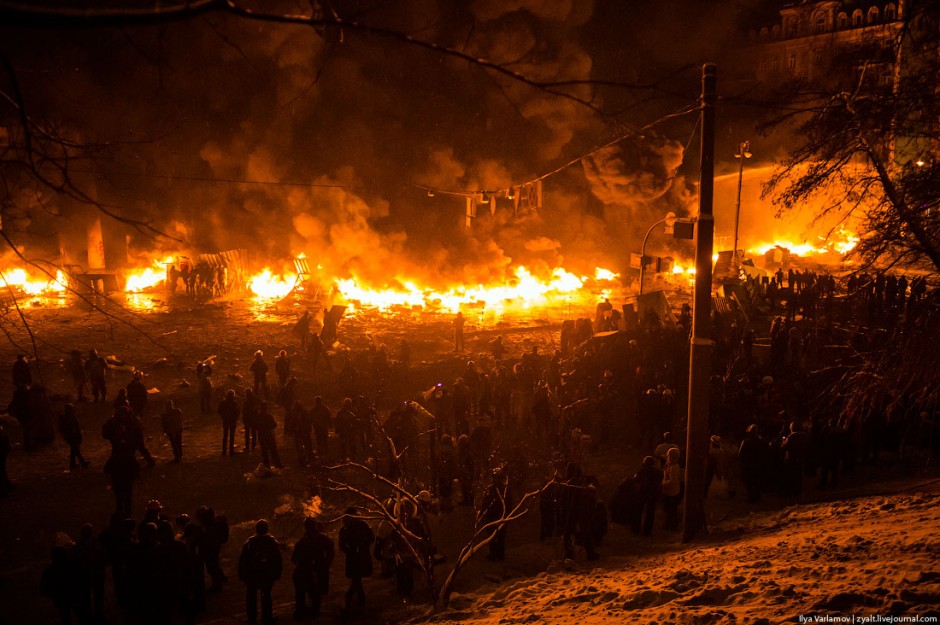
This is the main fire barricade, next to the Dynamo stadium, about 100 meters away from the first. The barricade consists of hundreds of old car tires which have been brought here from all over the city. The demonstrators have been very lucky with the wind, which carries the black smoke into the Berkut and internal forces' lines. Neither side can see the other through the smoke and both sides are working blind.
Intermission
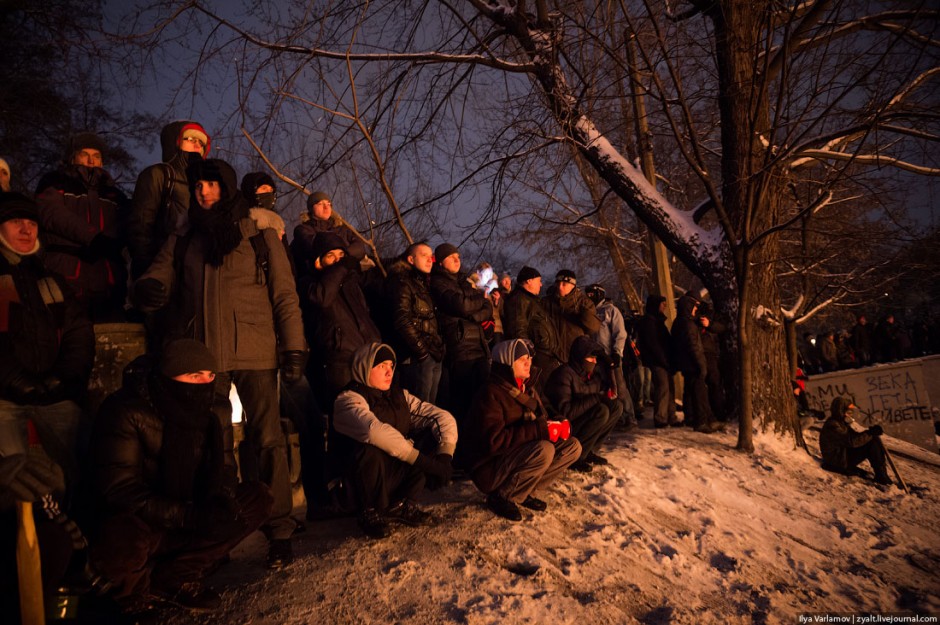
On the hill groups of onlookers follow the battle. The fight has been going on for four days.
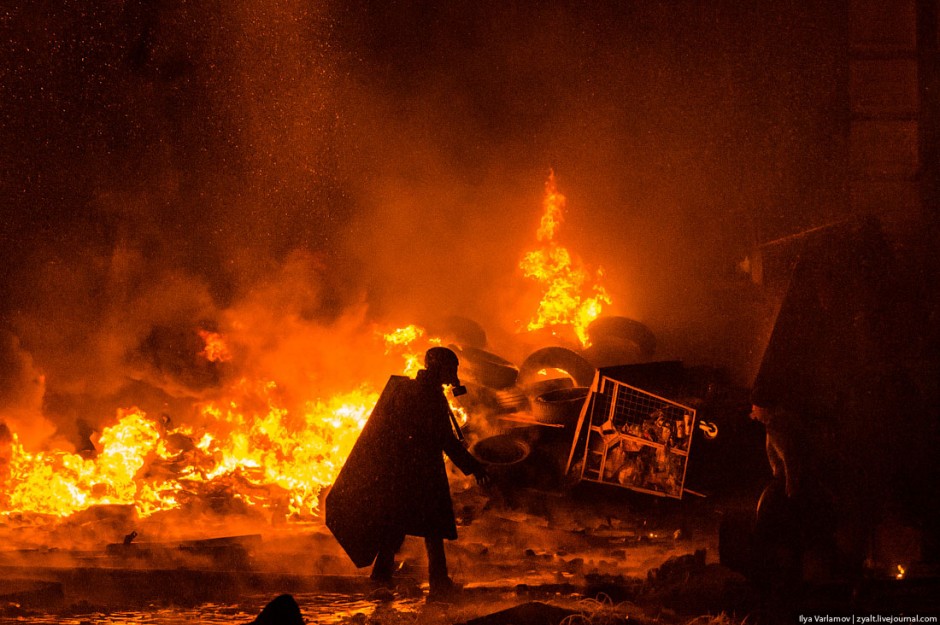
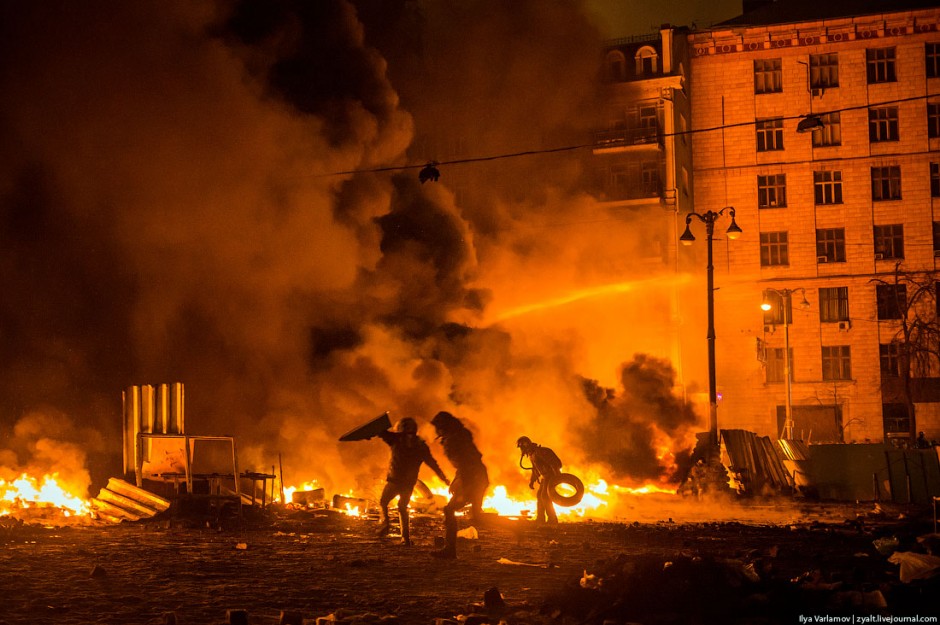
Activists approach the lines with shields and throw rocks. No one can see the enemy but everyone has an approximate idea of how far Berkut can lob their grenades. The grenades are either flashbangs or tear gas which cause no harm at all to experienced demonstrators. The main thing is to avoid a direct impact or a detonation in your immediate vicinity, which can cause a concussion.

Fresh tires are constantly added to the fire. The smoke screen must be thick! At one point Berkut attempted to illuminate the Maydan positions with a searchlight.
Intermission

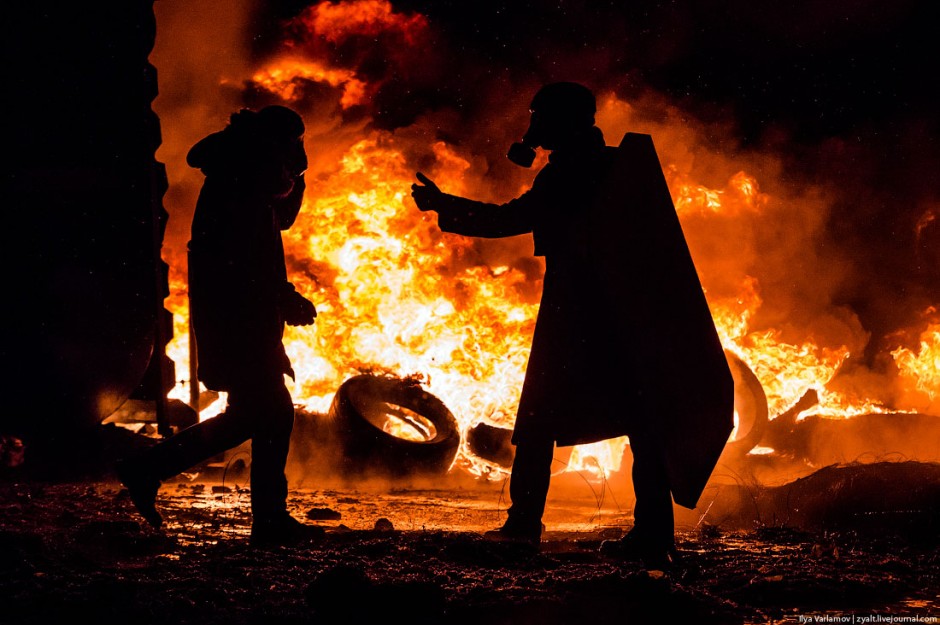
As on every battlefield, there are scouts who keep a close eye on enemy positions. The man wearing the gas mask and carrying a shield will always tells you where it's safe. "Hold on, there's a bastard behind that column taking potshots. Don't go past this line. We'll get him out of there in a bit."

Scouts constantly provide updates on the enemy and coordinate activists, who throw rocks and Molotov cocktails.
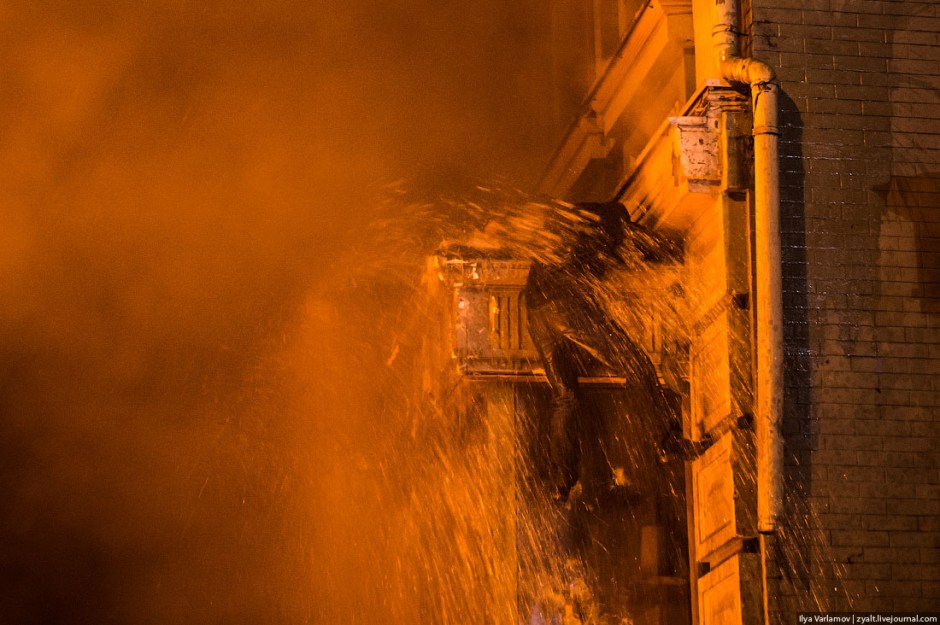
Internal Ministry troops turned several water cannons on the demonstrators. Amazingly, no one is particularly afraid of water. This scout is climbing up to the balcony to observe enemy movements behind the smoke screen. Those that got wet retreat to the fires to dry themselves. Many just walk around wet. There is a surreal atmosphere here. On one hand the exhaustion of the people is readily apparent. On the other, there is a certain euphoria and expectation of victory. In these circumstances, people ignore wet clothing. Only the volunteer medics demand that people dry themselves to avoid frostbite.
Intermission

Activists with Molotov cocktails on the front lines.
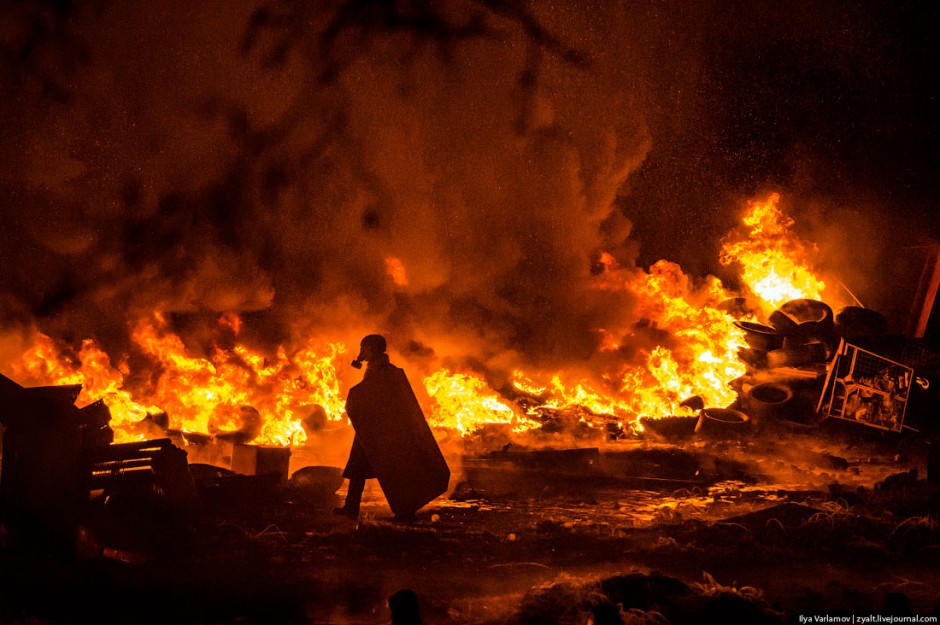
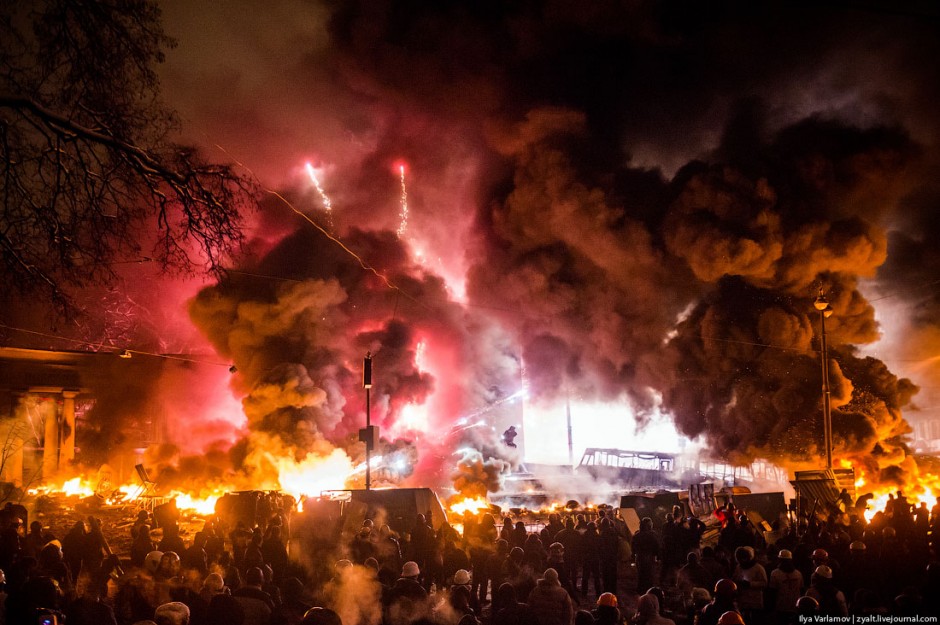
Fireworks are occasionally thrown at Berkut. When one goes off, the whole square becomes lit in bright colors and the people scream "hurray!"
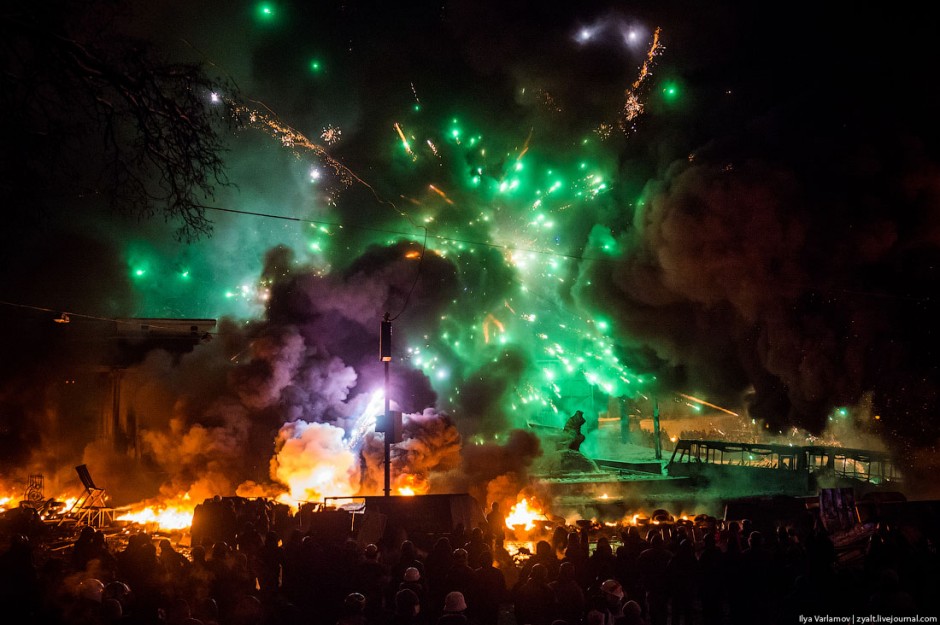
In reality, the center of Kiev is very beautiful now.
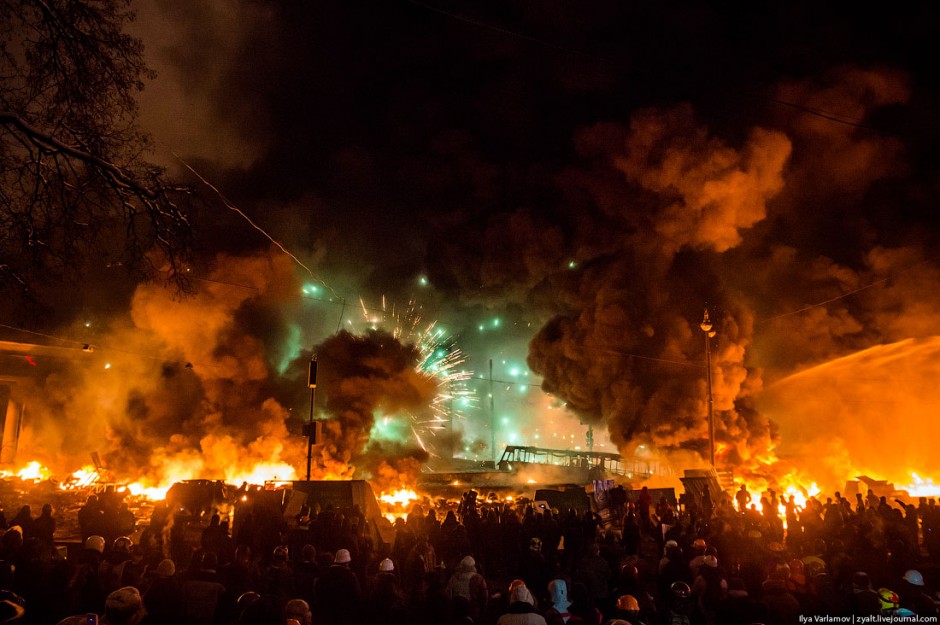
Somewhere there, hundreds of government troops prepare for the next assault. Assaults are always unexpected and very much dreaded. In the morning, Berkut showed that it is capable of dispersing the crowds in minutes. Why they have not yet done so remains a separate question.

To replace the captured and destroyed Catapult 1, came Catapult 2. In reality it is a slingshot writ large, but the nomenclature was retained.
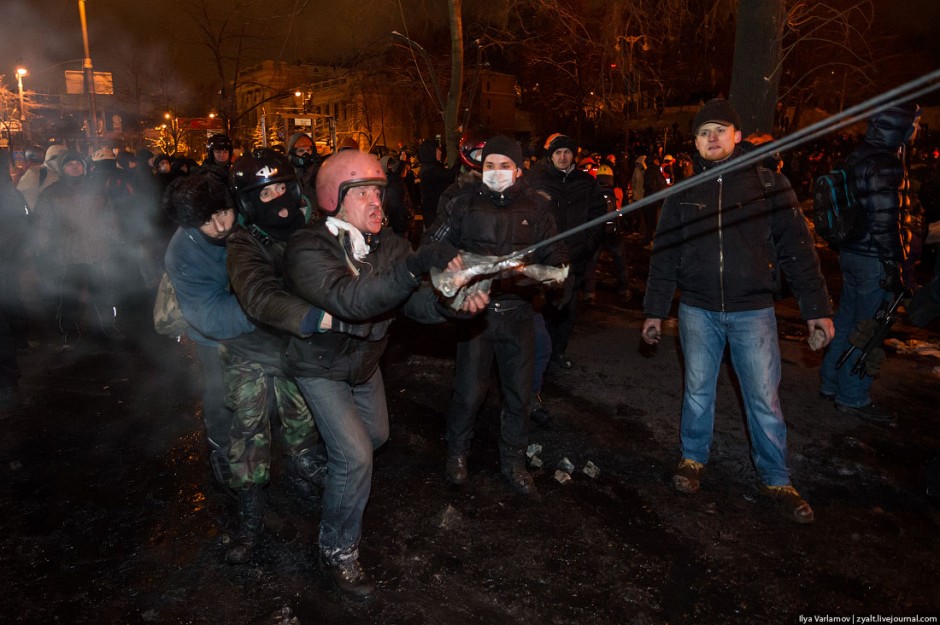
A wonder of engineering! Catapult 2 has passed testing and has arrived in the revolutionaries' arsenal. The crew of the catapult consists of six people. Three extend the elastic band containing the missile, two hold the construction in place, and the last loads and carries ammunition.
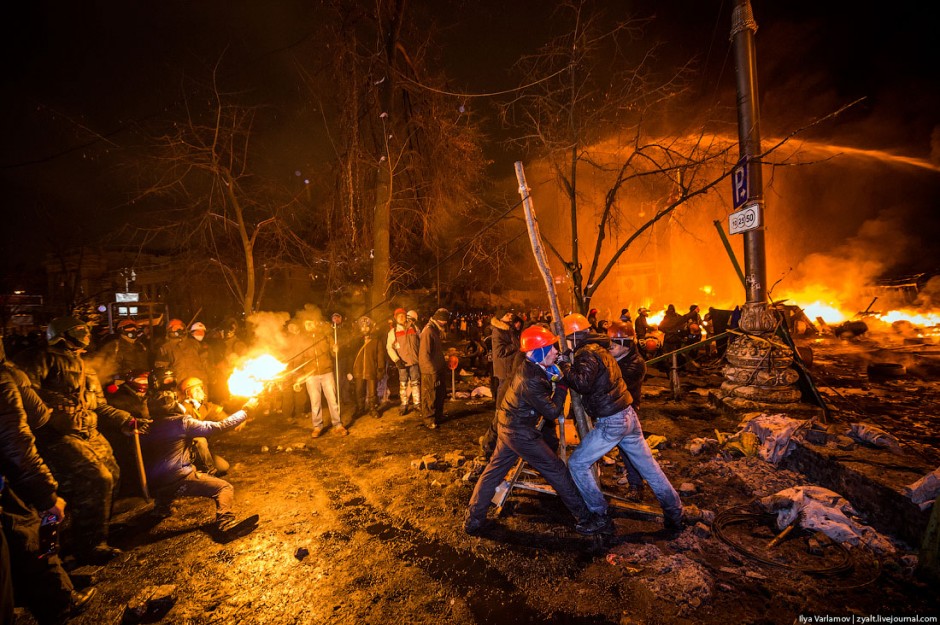
The wonder weapon works well, but slowly. The missiles fly far into the darkness, but reloading takes almost 2-3 minutes.
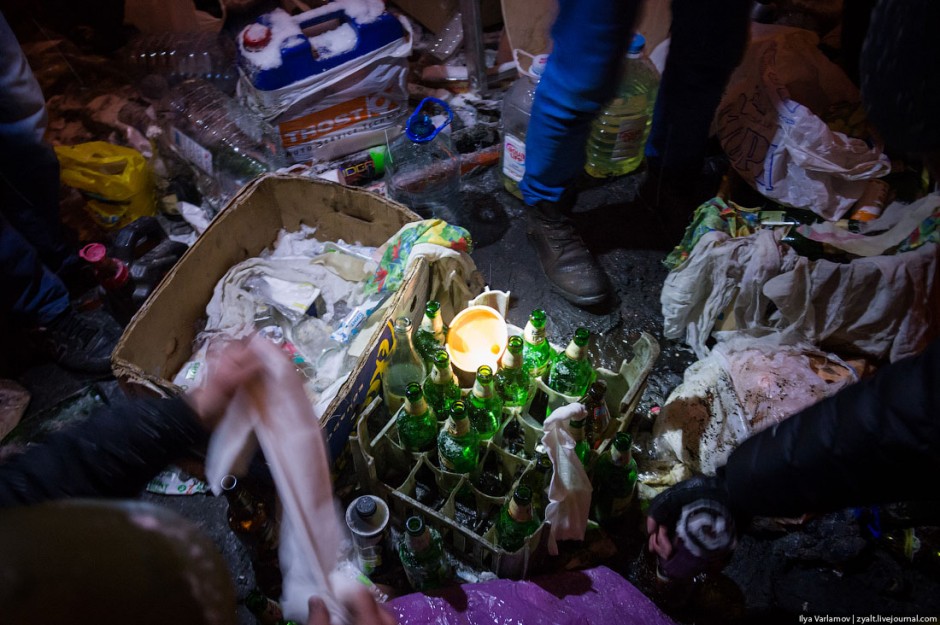
Nearby in an alley, Molotov cocktails are prepared. In reality, most bottles contain either pure kerosene or gasoline. No one pays much attention to the correct proportions—no time. Empty glass bottles are in short supply.
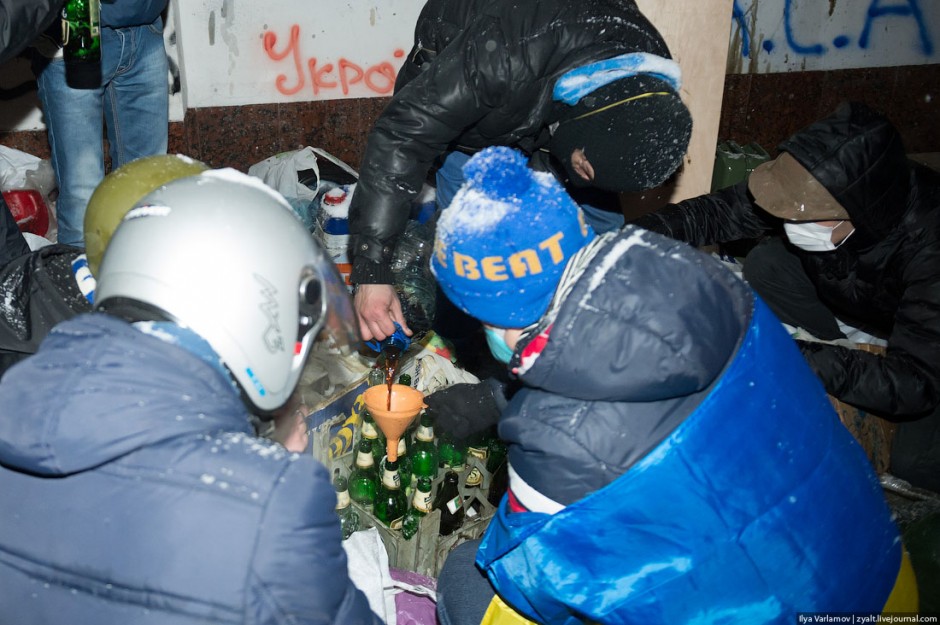
Noticed these guys guzzling Pepsi and thought to myself, why would you drink this crap in freezing temperatures? Turns out that glass bottles ran out and someone dropped off several crates of Pepsi. So as not to let the soda go to waste, everyone piled on and drank the contents. In general, any glass container is usable, even little jars from baby food. Any glass container can be thrown at the police. On the front lines, refueling duties are handled by the activists of the "right sector," but in the rear areas bottles are filled by old ladies and young girls alike, anyone whom the guards at the first barricade stop from going to the front lines.
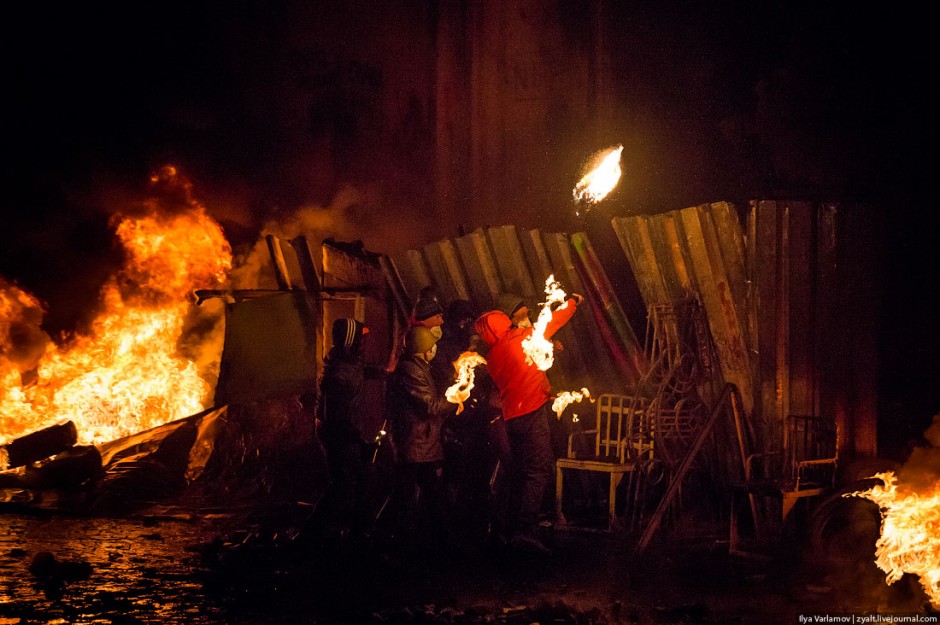
The bottles are indeed a problem. The contents of these is liquid, not gel, as it is intended to be in a real Molotov cocktail. The "fuse" is a simple rag. In the act of throwing, gasoline splashes out of the bottle and ignites on the thrower. He is, of course, quickly doused, but the effect is less that optimal. More that half of the cocktails spill before reaching their target.

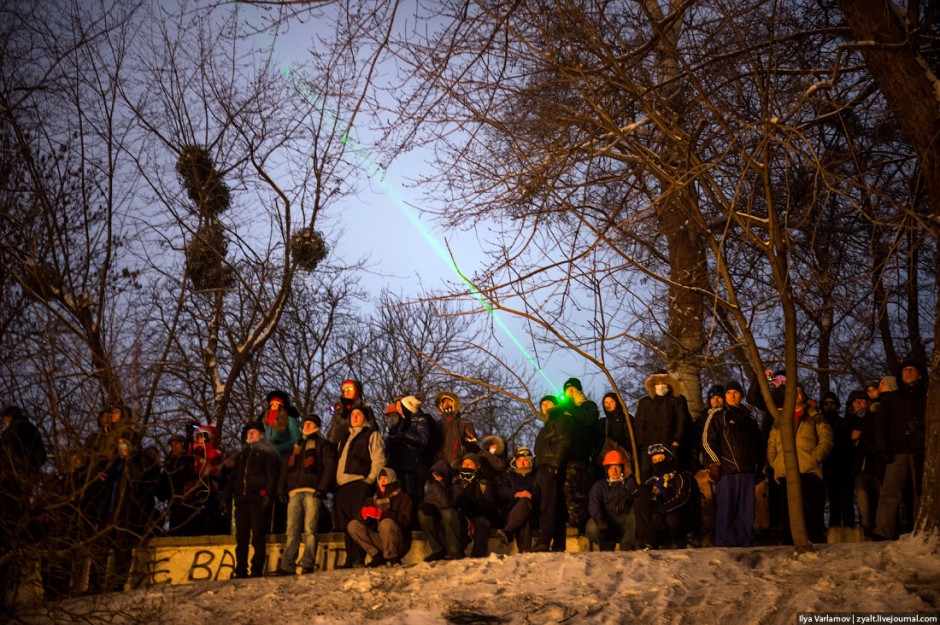
The onlookers on the hill help in any way they can. One way is to blind the Berkut troops with lasers. At one point, the police climbed the colonnade at the stadium entrance and the Maydan resistance began to be pelted with Molotov cocktails and gas grenades. People with lasers try to either hit the Berkut troops in the eyes or to pinpoint snipers on rooftops. There are constant stories about snipers but no concrete proof of their existence has yet been found.
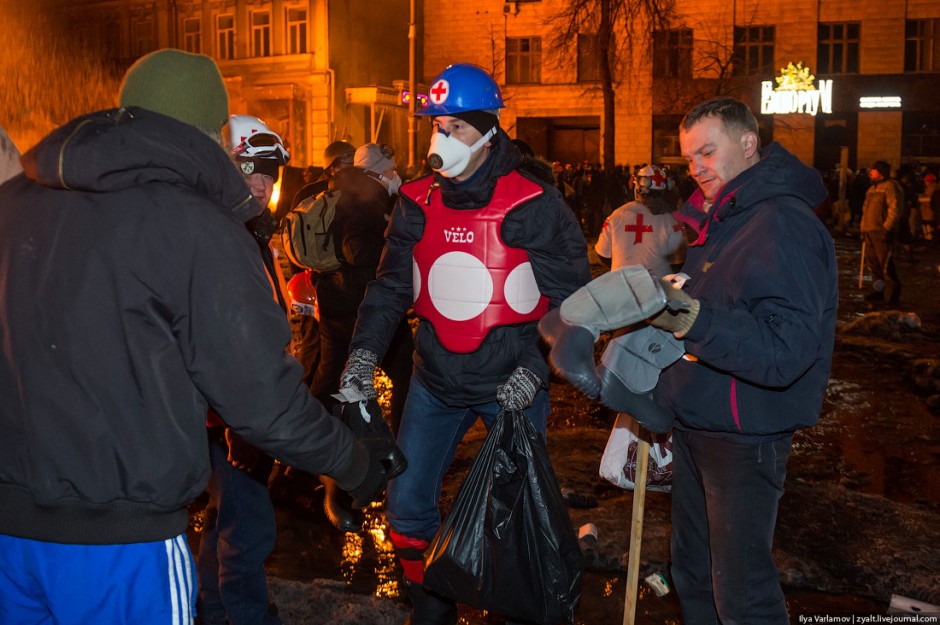
This volunteer on the front line is distributing dry, waterproof footwear.
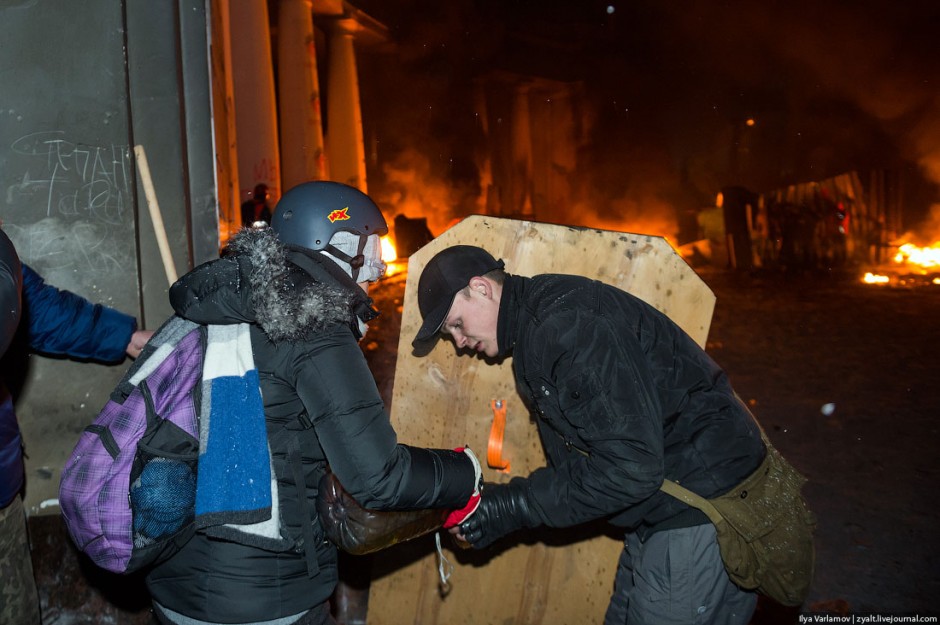
A girl with a can of hot tea is serving an activist on the front lines. Some people bring sandwiches—others, dry clothing.
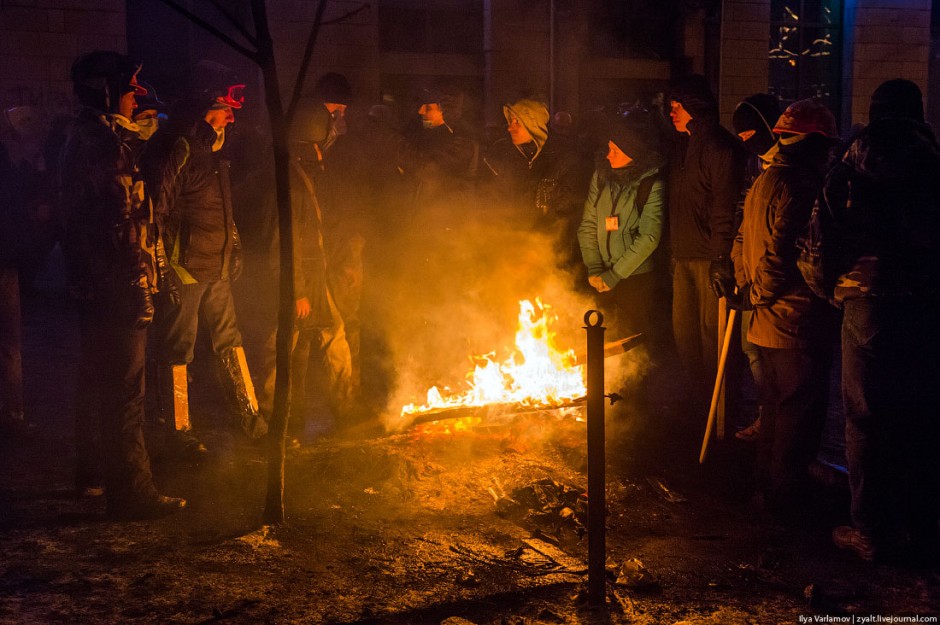
Fires behind the barricades allow wet and cold people to warm and dry themselves.
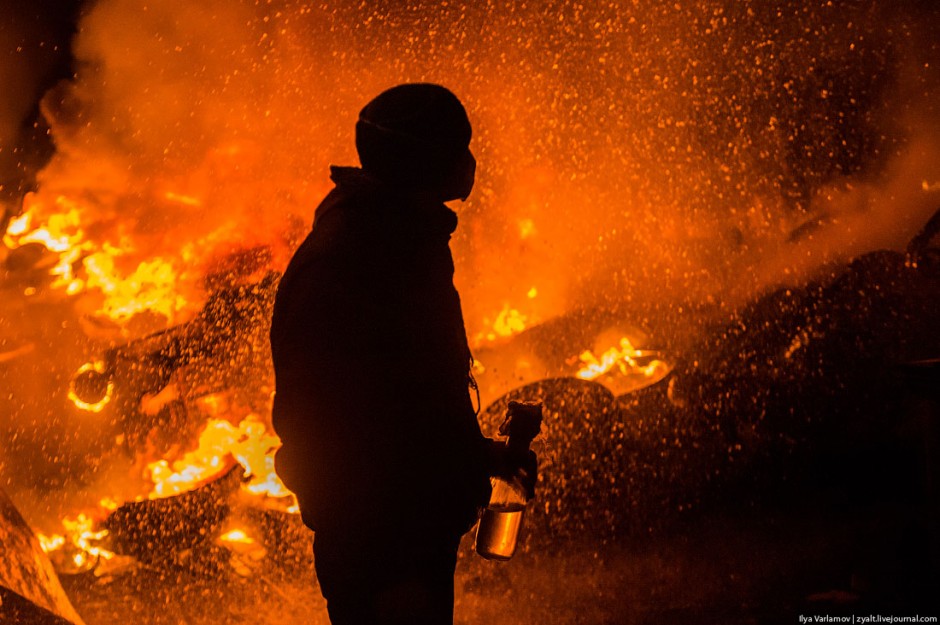
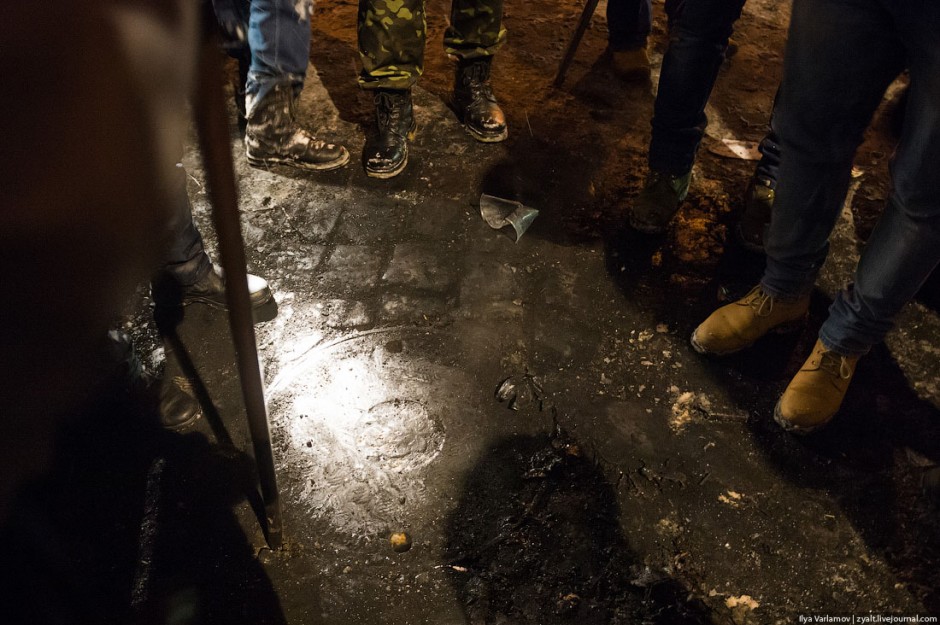
On my way back I run into a group of people attempting to pry open a manhole cover. "Why are you opening the manhole cover?" I ask. "Trying to close the water supply to the water cannons," they answer. The manhole remains closed. This is a government district and all the manholes are secured from the inside. The group then tried to break the manhole cover with a sledgehammer. I tried to explain that it's a futile exercise, but no one listened. The manhole, by the way, was never opened, and the water cannons continue to douse the demonstrators with cold water.
